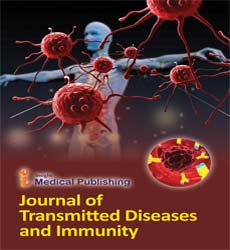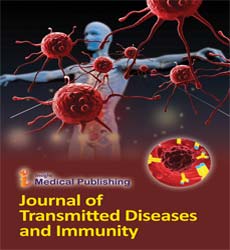ISSN : 2573-0320
Journal of Transmitted Diseases and Immunity
Autolysin-Independent DNA Release in Streptococcus pneumonia Invitro Biofilms
Abstract
Microbial biofilms provide an appropriate environment for increased genetic exchange. Extracellular DNA (eDNA) is an essential component of the extracellular matrix of microbial biofilms, but the pathway(s) responsible for DNA release are largely unknown. Autolysis (either spontaneous or phage-induced) has been proposed the major event leading to the appearance of eDNA. The ‘suicidal tendency’ of Streptococcus pneumonia is well-known, with lysis mainly caused by the triggering of Lytic, the major autolytic amidase. However, the LytC lysozyme and CbpD (a possible murein hydrolase) have also been shown involved. The present work examines the relationship between eDNA, autolysins, and the formation and maintenance of in vitro pneumococcal biofilms, via fluorescent labeling combined with confocal laser scanning microscopy, plus genetic transformation experiments. Bacterial DNA release mechanisms other than those entailing lytic enzymes were shown to be involved by demonstrating that horizontal gene transfer in biofilms takes place even in the absence of detectable autolytic activity. Evidence that the release of DNA is somehow linked to the production of extracellular vesicles by S. pneumonia is provided

Open Access Journals
- Aquaculture & Veterinary Science
- Chemistry & Chemical Sciences
- Clinical Sciences
- Engineering
- General Science
- Genetics & Molecular Biology
- Health Care & Nursing
- Immunology & Microbiology
- Materials Science
- Mathematics & Physics
- Medical Sciences
- Neurology & Psychiatry
- Oncology & Cancer Science
- Pharmaceutical Sciences
